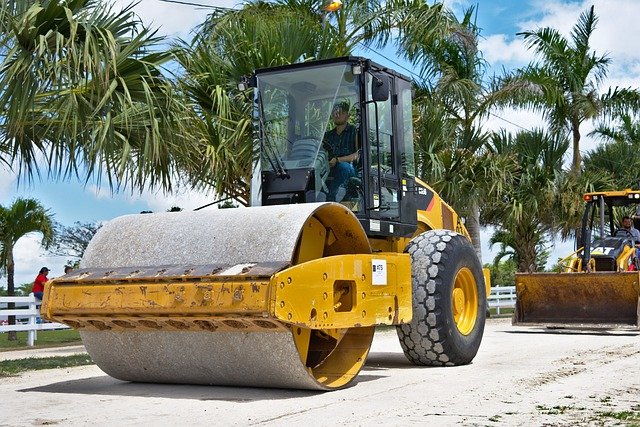Excavators: Essential Earth-Moving Machines for Construction and Mining
Excavators are powerful and versatile earth-moving machines widely used in construction, mining, landscaping, and demolition projects. These heavy-duty vehicles feature a boom, dipper, and bucket, allowing them to dig, lift, and move large quantities of earth, debris, or materials with precision and efficiency. From compact mini-excavators to massive mining excavators, these machines play a crucial role in shaping our built environment and extracting valuable resources.

-
Wheeled excavators: Equipped with rubber tires, these excavators are more mobile and can travel on paved surfaces without damaging them.
-
Mini excavators: Compact and maneuverable, mini excavators are perfect for small construction sites, landscaping, and utility work in tight spaces.
-
Long reach excavators: Featuring an extended boom and arm, these specialized machines are designed for deep excavation, demolition, and dredging operations.
-
Hydraulic shovels: These large excavators are commonly used in mining and quarrying applications, capable of moving massive amounts of material.
How do excavators work?
Excavators operate using a hydraulic system that powers the boom, arm, and bucket movements. The main components of an excavator include:
-
Undercarriage: The base of the machine, which can be tracked or wheeled.
-
House: The rotating upper structure that contains the operator’s cab and engine.
-
Boom: The long arm extending from the house.
-
Stick: The smaller arm attached to the end of the boom.
-
Bucket: The digging tool at the end of the stick.
The operator controls the excavator using joysticks and foot pedals inside the cab. These controls allow for precise movements of the boom, stick, and bucket, as well as the rotation of the house and travel direction of the undercarriage.
What are the key features to consider when choosing an excavator?
When selecting an excavator for a project, several important factors should be taken into account:
-
Size and weight: Choose an excavator that matches the scale of your project and can be transported to the site safely.
-
Digging depth and reach: Consider the maximum digging depth and horizontal reach required for your specific application.
-
Lifting capacity: Ensure the excavator can handle the weight of materials you need to move or lift.
-
Attachments: Look for machines compatible with various attachments like hydraulic hammers, grapples, or augers to increase versatility.
-
Fuel efficiency: Modern excavators often feature eco-modes and advanced engine management systems to reduce fuel consumption.
-
Operator comfort: A comfortable cab with good visibility and ergonomic controls can improve productivity and reduce operator fatigue.
-
Maintenance and serviceability: Easy access to service points and reliable dealer support are crucial for minimizing downtime.
How much does it cost to rent or buy an excavator?
The cost of renting or purchasing an excavator can vary significantly based on factors such as size, brand, features, and location. Here’s a general overview of excavator costs:
| Type | Rental Cost (Daily) | Rental Cost (Monthly) | Purchase Price (New) |
|---|---|---|---|
| Mini Excavator (3-6 tons) | $200 - $400 | $1,500 - $3,000 | $30,000 - $60,000 |
| Mid-Size Excavator (10-20 tons) | $300 - $600 | $2,500 - $5,000 | $100,000 - $200,000 |
| Large Excavator (30+ tons) | $500 - $1,000 | $5,000 - $10,000 | $250,000 - $500,000+ |
Prices, rates, or cost estimates mentioned in this article are based on the latest available information but may change over time. Independent research is advised before making financial decisions.
What are the safety considerations when operating an excavator?
Safety is paramount when operating heavy machinery like excavators. Key safety considerations include:
-
Operator training: Ensure all operators are properly trained and certified to use the specific excavator model.
-
Site assessment: Conduct a thorough site survey to identify potential hazards such as underground utilities, overhead power lines, or unstable ground conditions.
-
Personal protective equipment (PPE): Operators and ground workers should wear appropriate safety gear, including hard hats, high-visibility vests, and steel-toed boots.
-
Machine inspections: Perform daily pre-operation checks to ensure all systems are functioning correctly and safety features are in place.
-
Load limits: Never exceed the excavator’s rated lifting capacity or attempt to lift loads beyond its capabilities.
-
Proper communication: Establish clear communication protocols between the operator and ground workers using hand signals or two-way radios.
-
Stability: Always work on level ground when possible, and use outriggers or stabilizers when necessary to prevent tipping.
-
Visibility: Maintain a clear line of sight and use spotters when working in areas with limited visibility or near other workers.
By following these safety guidelines and adhering to local regulations, operators can minimize the risk of accidents and ensure a safe working environment for everyone on the job site.
Excavators are indispensable machines in the construction and mining industries, offering unparalleled earth-moving capabilities and versatility. Whether you’re working on a small residential project or a large-scale mining operation, choosing the right excavator and operating it safely can significantly improve productivity and efficiency. As technology continues to advance, we can expect to see even more innovative features and environmentally friendly options in the excavator market, further enhancing their value in shaping our built environment.





